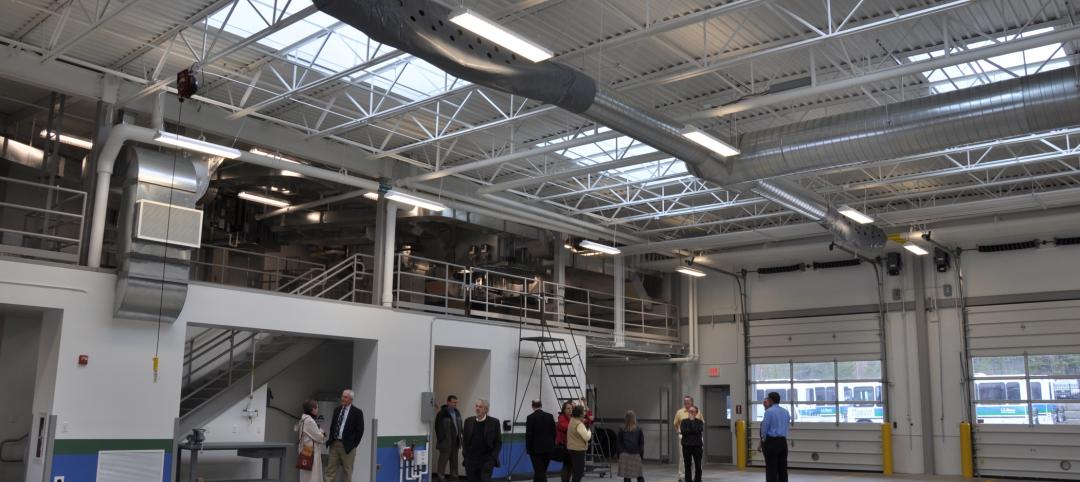Construction spending for education expanded modestly but steadily through March, while at the same time growth for other institutional construction had stalled earlier in 2009.
Education spending is now at or near the peak for this building cycle. The value of education starts is off 9% year-to-date compared to 2008. April starts fell 14% to the lowest total in more than three years. BD+C projects a 3–4% dip in education construction spending into early 2010, and then a recovery by the end of next year, which will bring spending up to early 2009 peak levels. Public education spending is up 6.4% in the past year but spending in the smaller, private sector dropped 0.4%. Funding for private education projects is very sensitive to current economic conditions, specifically tuition payments from current income and investment earnings.
College construction spending is up 12.2% from a year ago, but K-12 spending is up only 3%. Colleges boosted spending for instructional space 20.6% over the past year. Dormitory spending was up only 5%. These increases are the result of the relatively rapid expansion of community colleges and part-time programs for working adults. The small expansion of K-12 construction spending was entirely for high schools, which is up 7.9% over the last year. Middle school construction spending was steady, while elementary spending fell about 3%. These differences mirror enrollment changes. The peak enrollment is now in the 10th grade, which puts more pressure on high schools.
The reason the education construction recession is relatively modest is largely due to nearly $200 billion in state and local government aid included in the stimulus plan. This money is being paid out quickly because it's not linked to specific projects. These new funds offset the huge negative impact of reduced tax receipts in FY 09–10. Without the stimulus funds, a deep recession in public education construction would occur in 2009–10. Instead, most of the recession will be offset, with the balance deferred to 2011–12.
Related Stories
| Jun 22, 2012
Golden Gate Bridge Celebrates 75 Years With the Opening of New Bridge Pavilion
With features such as Nichiha's Illumination series panels, super-insulating glass units, and LED lighting, the new Golden Gate Bridge Pavilion not only boasts the bridge's famous international orange, but green sustainability as well
| Jun 22, 2012
Revitalization Efforts Advance in Hackensack, N.J.
Work progresses on Cultural and Performing Arts Center and Atlantic Street Park
| Jun 1, 2012
New BD+C University Course on Insulated Metal Panels available
By completing this course, you earn 1.0 HSW/SD AIA Learning Units.
| May 29, 2012
Reconstruction Awards Entry Information
Download a PDF of the Entry Information at the bottom of this page.
| May 29, 2012
Thornton Tomasetti/Fore Solutions provides consulting for Phase I of Acadia Gateway Center
Project receives LEED Gold certification.
| May 24, 2012
2012 Reconstruction Awards Entry Form
Download a PDF of the Entry Form at the bottom of this page.
| May 22, 2012
Casaccio Architects and GYA Architects join to form Casaccio Yu Architects
Architects Lee A. Casaccio, AIA, LEED AP, and George Yu, AIA, share leadership of the new firm.
| May 14, 2012
Adrian Smith + Gordon Gill Architecture design Seoul’s Dancing Dragons
Supertall two-tower complex located in Seoul’s Yongsan International Business District.
| May 7, 2012
2012 BUILDING TEAM AWARDS: Audie L. Murphy VA Hospital
How a Building Team created a high-tech rehabilitation center for wounded veterans of the conflicts in Iraq and Afghanistan.
| May 3, 2012
U of Michigan team looking to create highly efficient building envelope designs
The system combines the use of sensors, novel construction materials, and utility control software in an effort to create technology capable of reducing a building’s carbon footprint.













